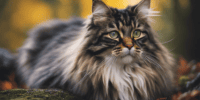Manx Cats: Tailless Wonders and Their Genetic Secrets
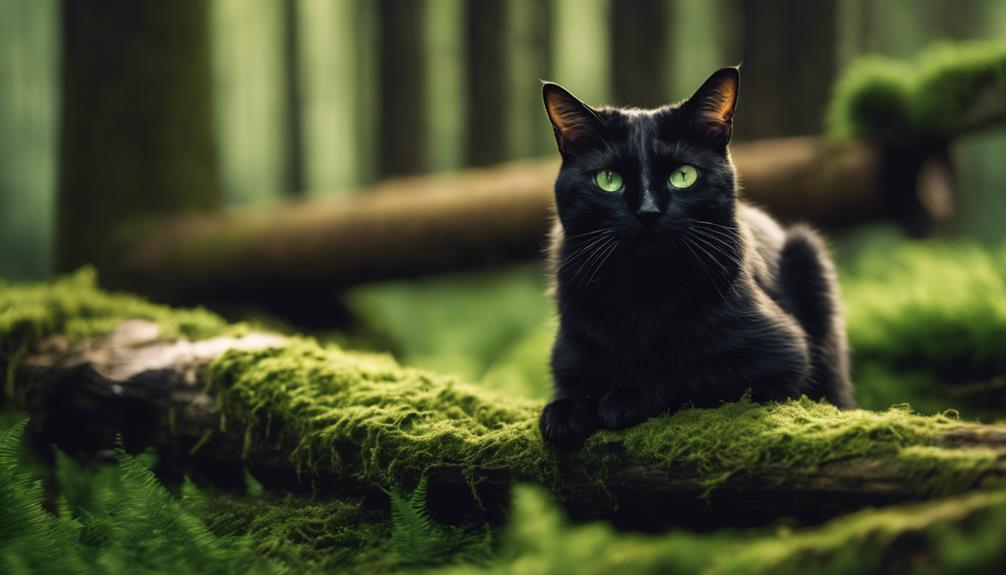
Manx cats are a unique breed known for their distinctive short tails or complete lack thereof. This genetic trait is caused by a mutation in the cat's spine, resulting in a shortened tail or no tail at all. The Manx gene is dominant, meaning that cats only need one copy of the gene to exhibit the trait. Despite their lack of tail, Manx cats are agile and athletic, with a playful and affectionate demeanor. These feline companions have captured the hearts of many cat lovers around the world.
Genetic studies have revealed that the Manx gene is associated with other health issues, such as spina bifida and digestive problems. Responsible breeding practices are essential to prevent these genetic disorders in Manx cats. Additionally, regular veterinary check-ups can help diagnose and manage any health issues that may arise. By understanding the genetic secrets behind the taillessness of Manx cats, breeders and owners can ensure the well-being of these unique feline companions.
The History of Manx Cats
The historical origins of Manx cats on the Isle of Man in the Irish Sea date back to the 18th century, where their distinctive lack of tail first emerged. According to folklore, the taillessness of Manx cats is linked to a legend involving a cat that was late to board Noah's Ark, resulting in its tail being caught and cut off by the door. This tale has been passed down through generations and is part of the cultural heritage surrounding these unique felines.
Recognized as a distinct breed in the late 19th century, Manx cats have captured the interest of people from various cultures due to their striking appearance and mysterious genetic secrets. Their history is deeply intertwined with the Isle of Man, where they've been cherished for centuries. The Isle of Man's rugged landscapes and maritime influences have shaped the evolution of these tailless wonders, making them a symbol of resilience and adaptability in the feline world.
Tailless Trait Inheritance
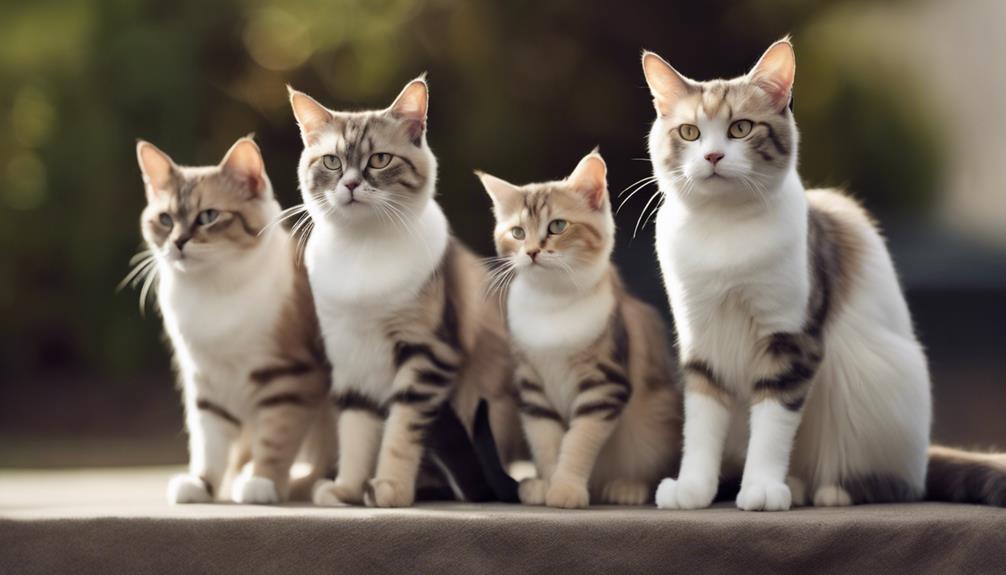
In Manx cats, the inheritance of the tailless trait is governed by a dominant gene. Manx cats with one copy of the gene exhibit partial tails, while those with two copies are completely tailless. The tailless gene in Manx cats can lead to varying tail lengths or the complete absence of a tail.
Breeding two tailless Manx cats can result in offspring with severe spinal issues, known as Manx syndrome. Therefore, genetic testing is crucial in breeding Manx cats to ensure the health and well-being of the offspring.
Genetic Variations in Manx Cats
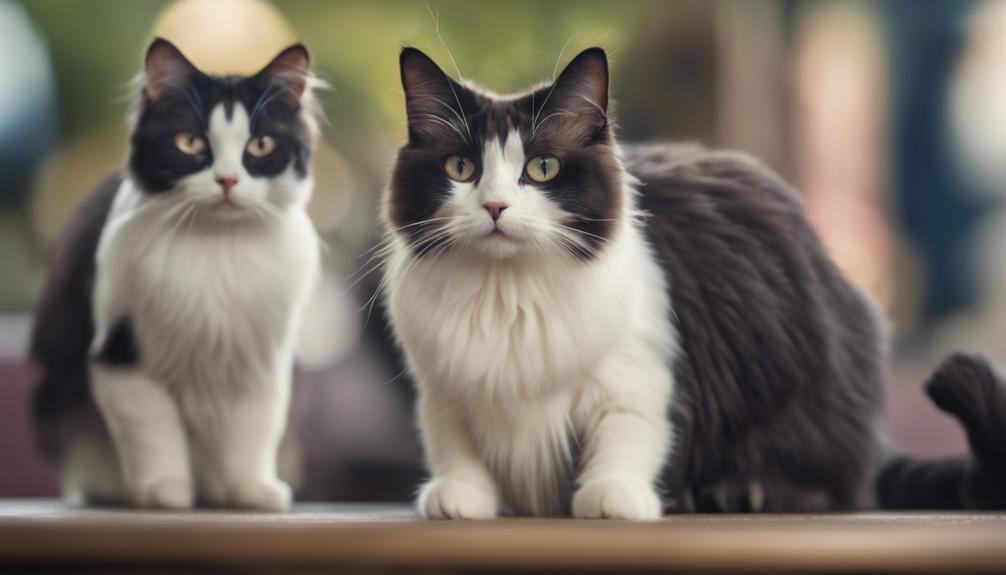
Manx cats exhibit a range of genetic variations contributing to their unique tail characteristics. The genetic mutation responsible for the taillessness in this cat breed affects the spinal structure, leading to varying tail lengths or no tail at all.
Researchers have delved into the gene responsible for the Manx taillessness, studying its unique variations and effects. Different alleles of this gene result in the spectrum of tail lengths observed in Manx cats.
Understanding these genetic variations is crucial for maintaining breed health and preserving the distinctive characteristics of the Manx cat. By unraveling the genetic secrets behind the taillessness, breeders and veterinarians can work towards ensuring the well-being of these cats and preserving their unique traits.
The genetic variations in Manx cats play a pivotal role in shaping not only their physical appearance but also their overall health and breed standards.
Health Considerations for Manx Cats
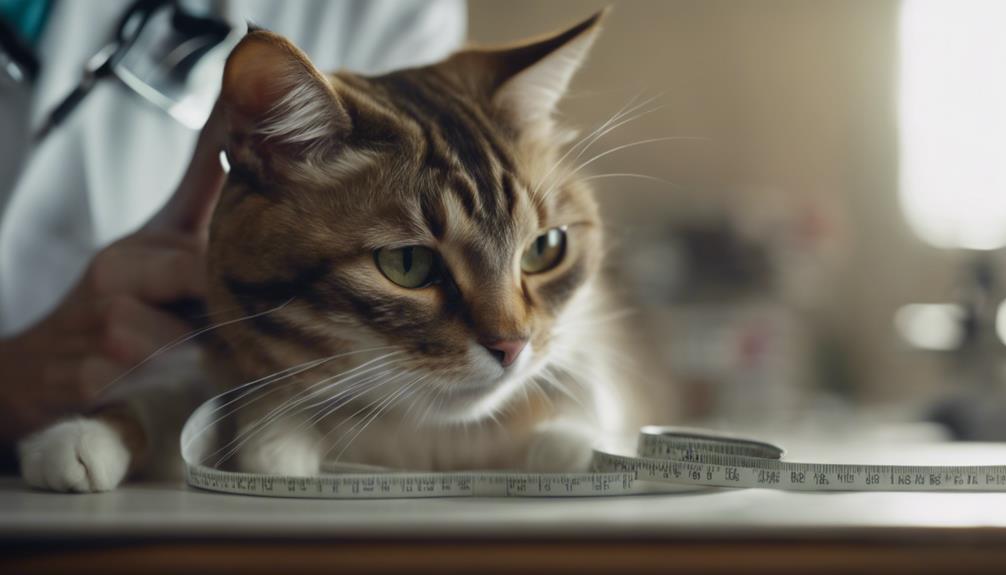
Health considerations for Manx cats encompass a range of factors essential for ensuring their well-being and longevity. Manx cats, being a tailless breed due to the Manx gene, are prone to a condition known as Manx syndrome, which can lead to spinal and neurological issues.
Regular veterinary checkups are crucial for monitoring their health status and addressing any emerging issues promptly. A balanced diet tailored to their unique nutritional needs is essential to support their overall health and prevent potential health concerns.
Responsible breeding practices play a significant role in managing genetic risks associated with the Manx gene, helping to reduce the likelihood of hereditary health issues. Genetic testing is a valuable tool in identifying potential health risks early on and guiding interventions to promote the well-being of Manx cats.
Manx Cats in Pop Culture
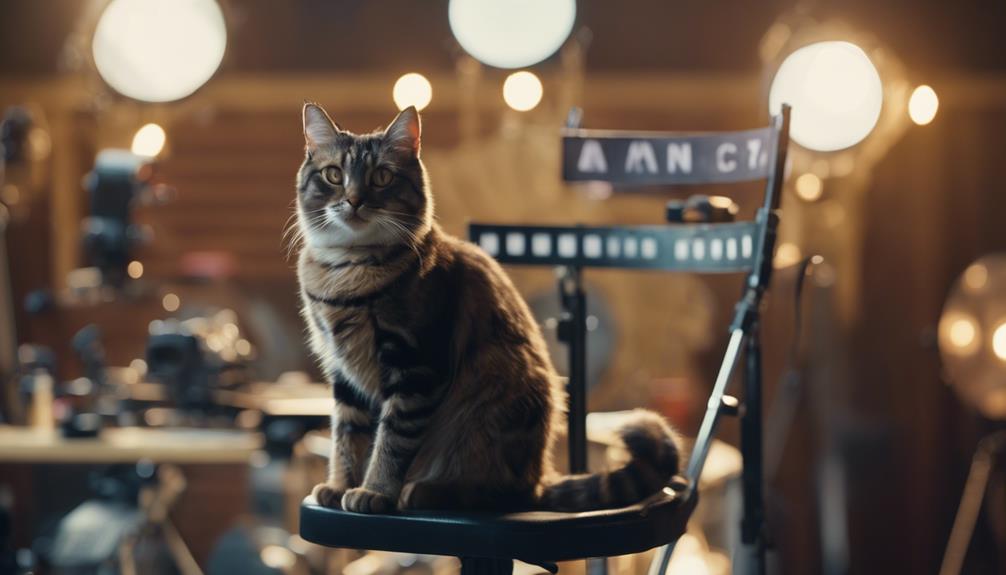
Notable for their presence in various forms of media, Manx cats have left a lasting impression on pop culture through their unique characteristics and distinctive portrayals. One of the most famous literary depictions of a Manx cat is the Cheshire Cat from Lewis Carroll's 'Alice's Adventures in Wonderland'. This whimsical character has contributed significantly to the association of Manx cats with mystery and intrigue in popular culture.
In the show world, Manx cats are recognized by cat associations with specific breed standards that emphasize their taillessness, rounded features, and compact bodies.
Their unique appearance and personalities make Manx cats popular choices for cat breeding and shows, where their regal posture and dignified presence often captivate audiences. The allure of Manx cats in pop culture isn't only due to their physical attributes but also their charming and affectionate nature, which shines through in various portrayals in books, movies, and TV shows. Whether portrayed as magical creatures or elegant companions, Manx cats continue to be celebrated for their distinctive traits in the world of entertainment.
Breeding Practices and Ethics
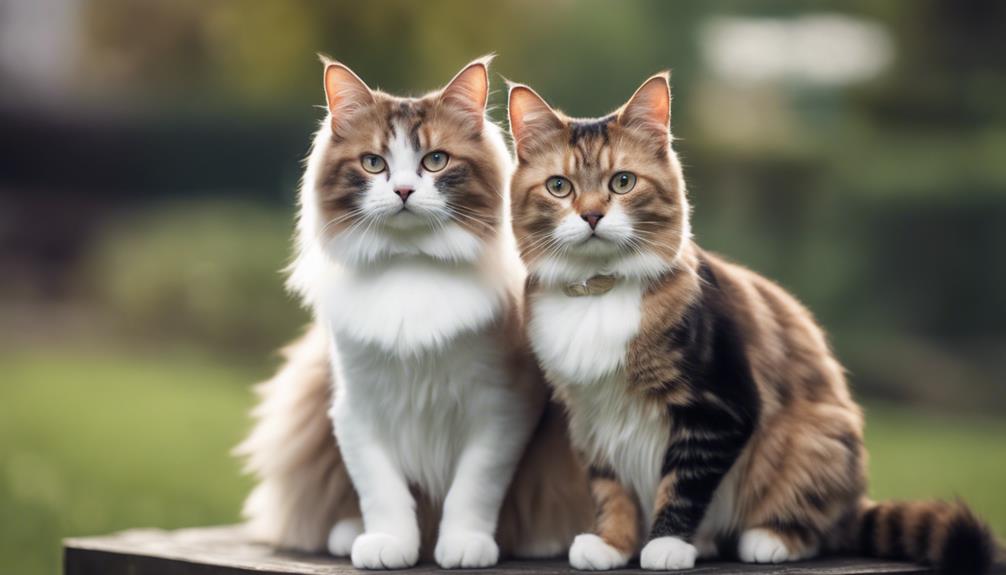
An essential aspect of ethical breeding practices for Manx cats involves conscientiously avoiding the mating of two tailless individuals to prevent serious health complications. Ethical breeders prioritize the health and well-being of Manx cats over specific physical traits, ensuring responsible breeding practices.
To achieve this, breeders should conduct genetic testing to identify potential health risks associated with the Manx gene. Selective breeding plays a crucial role in minimizing the occurrence of Manx syndrome within the breed, emphasizing the importance of maintaining breed standards while prioritizing the health and longevity of Manx cats.
Manx Cats: Future Research Avenues

Future research on Manx cats may involve exploring the genetic basis of taillessness to uncover evolutionary insights and improve health management strategies related to Manx syndrome. Investigating the specific alleles responsible for taillessness in Manx cats could offer valuable information on evolutionary adaptations within this unique breed.
Understanding the prevalence and inheritance patterns of Manx syndrome could lead to the development of more effective health management protocols to address potential health issues associated with the breed. Additionally, delving into the relationship between the Manx gene and other physical and behavioral traits in Manx cats may unveil further genetic secrets that contribute to their distinct characteristics.
Researching the historical development and genetic diversity of Manx cats is crucial for gaining a comprehensive understanding of their origins and the factors that shape their genetic makeup. By focusing on these avenues of research, scientists can deepen their knowledge of Manx cats and potentially enhance the well-being of this extraordinary feline population.
Frequently Asked Questions
What Is the Genetic Defect in the Manx Cat?
The genetic defect in Manx cats is a tailless mutation in the T-box gene. This affects their spine development, leading to taillessness. Manx cats, due to this genetic inheritance, may exhibit varying degrees of taillessness and sometimes suffer from spinal deformities.
What Are the Unique Features of the Manx Cat?
Manx cats are tailless wonders with a distinctive appearance. They are playful companions with adorable quirks and a curious history. These feline friends have resilient genetics, loyal pets known for their ancient legends and genetic mysteries.
How Do Manx Cats Balance Without Tail?
Manx cats maintain balance through a unique tailless adaptation, relying on muscular strength, low center of gravity, and agile movements. Their body structure allows for natural swaying and exceptional jumping abilities, showcasing an evolutionary adaptation for efficient coordination.
What Is the Genetics of Tailless Cats?
Tailless mutations in cats can be traced back to inherited traits linked to genetic variations. The Manx breed exemplifies this with tailless cats and tailless kittens, making genetic studies vital in understanding the evolutionary history of the tailless gene.




